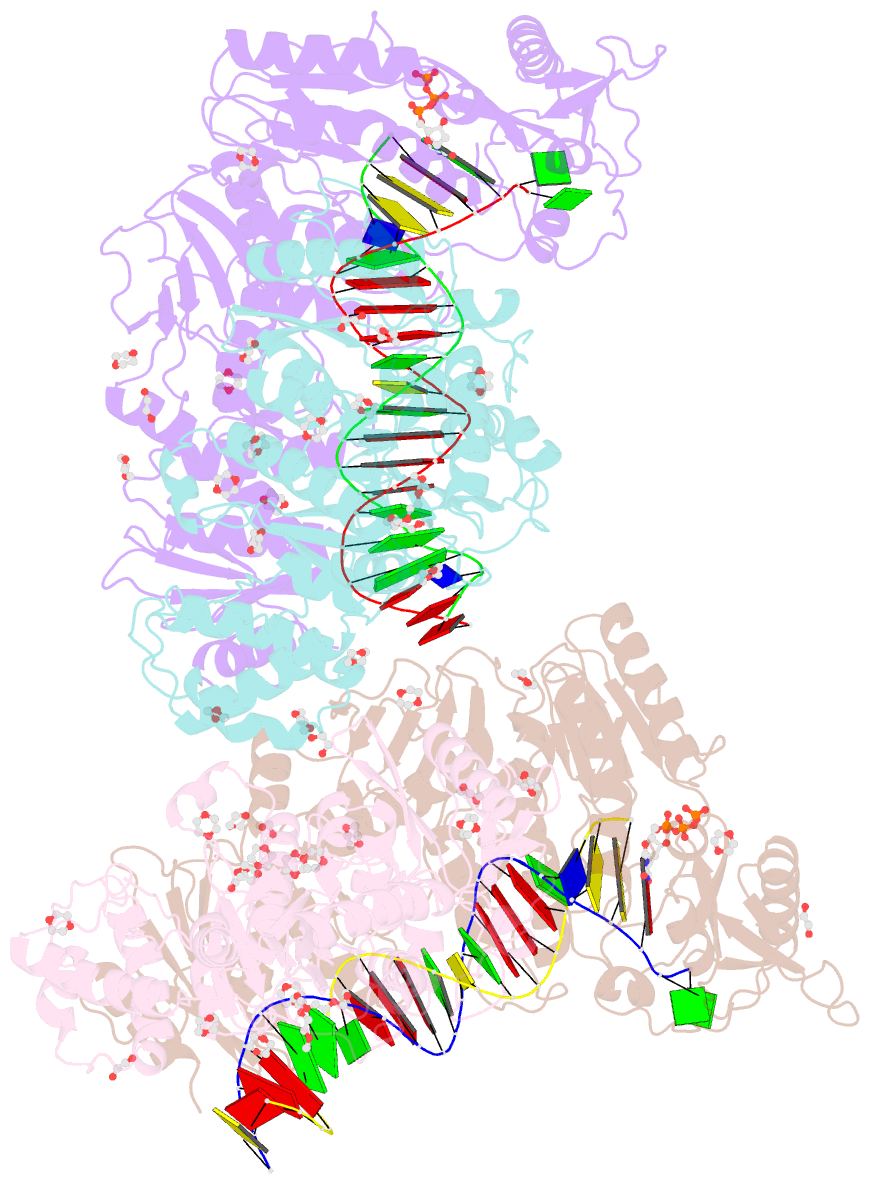Summary information and primary citation
- PDB-id
- 7sr6; SNAP-derived features in text and JSON formats;
DNAproDB
- Class
- replication
- Method
- X-ray (2.62 Å)
- Summary
- Human endogenous retrovirus (herv-k) reverse transcriptase ternary complex with dsDNA template primer and dntp
- Reference
- Baldwin ET, Gotte M, Tchesnokov EP, Arnold E, Hagel M, Nichols C, Dossang P, Lamers M, Wan P, Steinbacher S, Romero DL (2022): "Human endogenous retrovirus-K (HERV-K) reverse transcriptase (RT) structure and biochemistry reveals remarkable similarities to HIV-1 RT and opportunities for HERV-K-specific inhibition." Proc.Natl.Acad.Sci.USA, 119, e2200260119. doi: 10.1073/pnas.2200260119.
- Abstract
- Human endogenous retroviruses (HERVs) comprise nearly 8% of the human genome and are derived from ancient integrations of retroviruses into the germline. The biology of HERVs is poorly defined, but there is accumulating evidence supporting pathological roles in diverse diseases, such as cancer, autoimmune, and neurodegenerative diseases. Functional proteins are produced by HERV-encoded genes, including reverse transcriptases (RTs), which could be a contributor to the pathology attributed to aberrant HERV-K expression. To facilitate the discovery and development of HERV-K RT potent and selective inhibitors, we expressed active HERV-K RT and determined the crystal structure of a ternary complex of this enzyme with a double-stranded DNA substrate. We demonstrate a range of RT inhibition with antiretroviral nucleotide analogs, while classic nonnucleoside analogs do not inhibit HERV-K RT. Detailed comparisons of HERV-K RT with other known RTs demonstrate similarities to diverse RT families and a striking similarity to the HIV-1 RT asymmetric heterodimer. Our analysis further reveals opportunities for selective HERV-K RT inhibition.





